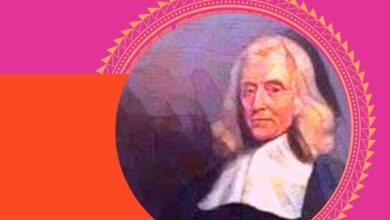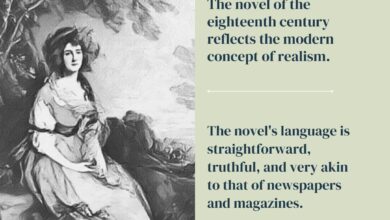Write a note on elizabethan sonnets and sonneteers
The sonnet originated in fourteenth-century Italy. Petrarch and Dante were the direction’s pioneers. Petrarch addressed his love sonnets to Laura, while Dante addressed them to Beatrice. The sonnet flourished in fifteenth-century Italy. By the sixteenth century, it had spread to Spain and France. It arrived in England in the first half of the sixteenth century through the works of Wyatt and Surrey. They were instrumental in popularizing the sonnet.
The sonnet’s creation from Thomas Wyatt to Shakespeare
Wyatt popularized the Petrarchan model, and his example inspired a large number of imitators. Wyatt did not write any unforgettable sonnets, but he did pave the way. He imbued poetry with emotion and passion, fervor and zeal. He popularized the art of writing love sonnets and left thirty-one sonnets of uncommon excellence and elegance in his wake. Ten of them were translations from Petrarch, and all were written in the Petrarchan style except for Surrey’s couplet ending. Serious and reflective in tone, the sonnets exhibit some stiffness in structure and metrical insecurity, illustrating the trouble Wyatt encountered with the current prolixity and uncouthness of much earlier poetry.
Henry Howard, Earl of Surrey, popularized sonnet writing and gave the sonnet a new direction. Rather than following Wyatt’s Petrarchan form, he introduced a new form that Shakespeare later used with ease and grace. Surrey’s sonnets were published as love letters to Geraldine or Lady Elizabeth Fitzgerald. They had an aura of melancholy and sorrow. They reflected in their structure the poet’s heart’s love-lorn cries. Wyatt and Surrey deserve praise for introducing the personal note into the sonnet composition. Surrey also wrote impersonal sonnets with a cynical and satirical tone.
Read more Describe the unique features of the English Renaissance
Following Wyatt and Surrey, the sonnet languished for many years until Sir Philip Sidney resurrected the dying genre with one hundred and eight sonnets and eleven songs collected in Astrophel and Stella. These poems are addressed to Penelope Devereux, later Lady Rich, and convey the poet’s passion for a lady who abandoned him to marry Lord Rich, with whom she lived in the most unhappy circumstances for a time. On the one hand, these sonnets contain much of the traditional material of the Italian sonneteers; on the other hand, some touches are so pertinent to the circumstance of a man who loves too late that one hesitates to attribute them to simple dramatic talent.
Petrarch and Ronsard strongly influence these sonnet’s tone and style, establish Sidney as the greatest Elizabethan sonneteer aside from Shakespeare. They elicit genuine lyric emotion. These sonnets are not merely an exercise in literary rhetoric. They are all an outpouring of true love, as shown by the sequence’s very first sonnet.
Sidney’s sonnets
Sidney writes in Astrophel and Stella not out of pleasure or accomplishment but out of necessity. His sonnets are dripping with blood. In Fors Clavigera, Ruskin observes, “If you don’t like these love songs, you just haven’t been in love or don’t know good writing from poor.” We find fine pictorial touches, flashes of elegance, notes of desire, and unforgettable phrases in Sidney’s sonnets and songs. In his commentary on Sidney’s sonnets, Charles Lamb writes, “Sidney’s sonnets are not only verbose; they are also dense with content and circumstantial. They are brimming with amorous fantasies-fanciful conceits that are entirely appropriate for his profession.”
Read also Discuss the character of dr faustus as a tragic figure
Hazlitt characterizes Sidney’s sonnets as jejune, icy, stiff, and clumsy. The reality is possibly somewhere in between these two conclusions. Sidney’s sonnets are replete with felicitous expressions, but he never wastes his genius on a diet of dainty words. Lyric sentiment had a profound effect on him. He was born with the lyric ability to conjure up the illusion of a personal confession at will. However, his sonnets suffer from a number of flaws. His poetic love tale contradicts the reality of his biography and is reminiscent of international styles. While Sidney’s claims to originality cannot be taken literally, he can justly be considered the first Englishman to suggest the sonnet’s potential.
The Amoretti sonnets
Following the publication of Sidney’s Astrophel and Stella, a bountiful harvest of sonnets was harvested by a variety of poets, including Spenser and Shakespeare. Spenser wrote eighty-eight love sonnets for Elizabeth Boyle. Amoretti is the Italian title given to these sonnets. They are genuine and untouched expressions of the poet’s feelings, devoid of allegory. There is none of Sidney’s unrequited affection for Lord Rich’s wife here, nor is there any of Shakespeare’s whining tone after his mistress betrayed him with his mate. The purity of Spenser’s sonnets is exceptional. They say a tale of unrepentant passion. They possess a purity of tone that exemplifies the consistency in Spenser that Coleridge dubbed ‘maidenliness.’
The Amoretti sonnets are written with a familiar and straightforward grace that is both straightforward and melodious, capable of touching into beauty the mundane changes and chances of the lovers’ fortunes or expressing the ecstasy that is so characteristic of the sonnet. They are incomplete as a sequence, as venomous tongues trigger confusion and separation, and the final four sonnets are in the minor key. The epithalamion, which ends them, contains the consummation.
Criticism
Modern criticism, which has made such a crippling attack on the sincerity of Elizabethan sonneteers, cannot be expected to leave Spenser’s lovely sequence unchallenged, and a recent opinion has advanced that Amoretti is primarily addressed to Lady Carey rather than Elizabeth Boyle. Spenser’s passion was verbal drawing, which the sonnet lacked. Naturally, one can detect a lack of zeal in these sonnets. The heroine is merely an embodiment of Petrarch’s concept of beauty, not a flesh and blood human. Some of them suffer from a lack of earthly love. Nevertheless, despite their lack of universal zeal, we cannot help but admire them, as they embody the best values of the Elizabethan sonnet.
See also Stream of consciousness novel in english literature
Henry Constable’s sonnets
Henry Constable was another sonneteer of this period. He composed a series of love sonnets and named his sonnet sequence Diana. “He is frequently inventive. Occasionally graceful, but still traditional.” (According to Seccombe and Allen).
Daniel’s sonnets
Daniel was a well-known sonneteer, second only to Henry Constable. He was more capable of establishing a reputation and achieving success than Henry Constable. He drew influence from foreign sources and followed Tasso’s model in his Delia, a series of love sonnets addressed without conviction or confidence to an imaginary mistress. She remains invisible, unavailable, cold, unknown, and absent, despite his entreaties.
His sonnets contain an abundance of chilling appeals to her pity that have little impact on her defiant nature. The language of the sonnets is typically pure, and the versification is right, despite some forced elisions and epithets à la Du Bartas. Daniel’s sonnets are never turbulent, passionate, or chaotic. Barne Barnes exemplified the polar opposite of Daniel. He was a fervent sonnet writer, and his heart’s turmoil is expressed in Parhenophil and Parthenope.
Shakespeare’s sonnets
Shakespeare was an exceptional sonneteer, and together with Sidney and Spenser, he elevated and glorified the sonneteer’s occupation. In 1609, Thomas Thorpe published a compilation of Shakespeare’s sonnets, dedicating the volume to a certain “Mr. W.H.” as “the sole begetter” of the sonnets. ‘Mr. W.H. has been named as the Earl of Pembroke, William Herbert. Mr. W.H. and a Dark Lady are addressed in 154 sonnets. These sonnets possess exceptional literary qualities. They are unique in their passion’s scope, width, and persistence, in their lordly and never overbearing splendor of style, and, above all, in their mastery of a rich and luscious phraseology. They are written in an awe-inspiring style.
Drayton’s sonnets
Following Shakespeare, the only other notable Elizabethan sonnet writer was Michael Drayton. In his well-known sonnet series, Idea, Drayton attained the pinnacle of poetic feeling and language. The title was explicitly lifted from Claude de Pontoux’s lengthy sonnet series ‘L’ Idee. Drayton’s sonnets offer no impression of genuine love, and we have no way of knowing if this Idea represents a single woman, a group of women, or none at all. His imitative appeals tonight, to his lady’s fair eyes, to the river, to classical allusions, to his belief that his verse is everlasting – all of these themes recall Ronsard and Desportes’ or their humble disciples’ gestures.
Drayton’s sonnets demonstrate a woeful lack of delicacy. He, like Barnes, is often obscene. His preoccupation with geography even marred his love sonnets. He portrays himself as a daring seafarer who has navigated the treacherous seas of love. Other sonnet writers of the period were weak imitations of Petrarch and Ronsard. They demonstrate how lofty and profound minds like Sidney, Spenser, and Shakespeare are superior to the mediocre, even in an artificial genre like the sonnet, where sincerity has no bearing on the work’s purity.





